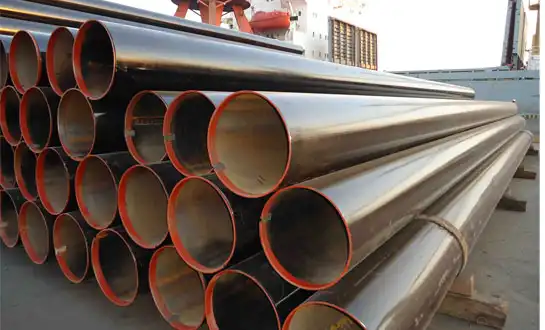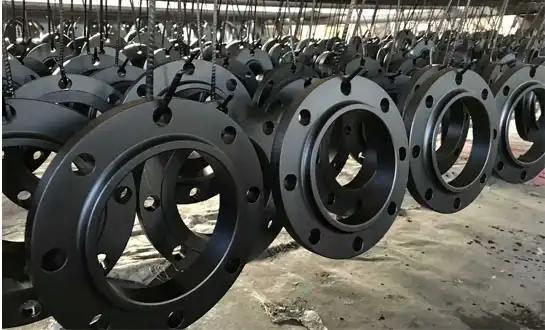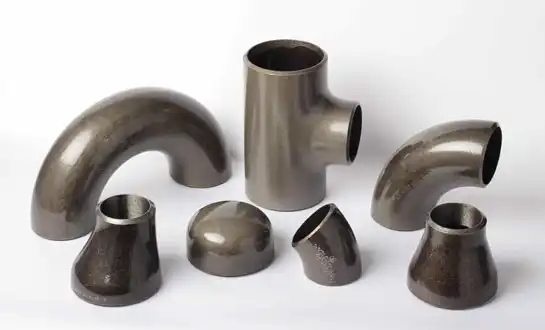A Buyer’s Guide to Pressure Class Flanges for Petrochemical Projects
A number of technical aspects that directly affect system safety, operational effectiveness, and long-term dependability must be carefully considered when choosing the right pressure class flanges for petrochemical process operations. Petrochemical plants work in harsh surroundings with high pressure, caustic chemicals, and unpredictable temperatures where a component failure could have disastrous results. For procurement specialists entrusted with locating components that satisfy strict industrial standards while preserving cost-effectiveness, an understanding of the subtleties of pressure class flanges becomes crucial. With the help of this thorough reference, purchasers will be able to make well-informed judgments on the selection of pressure class flanges, installation procedures, and maintenance needs unique to petrochemical applications.
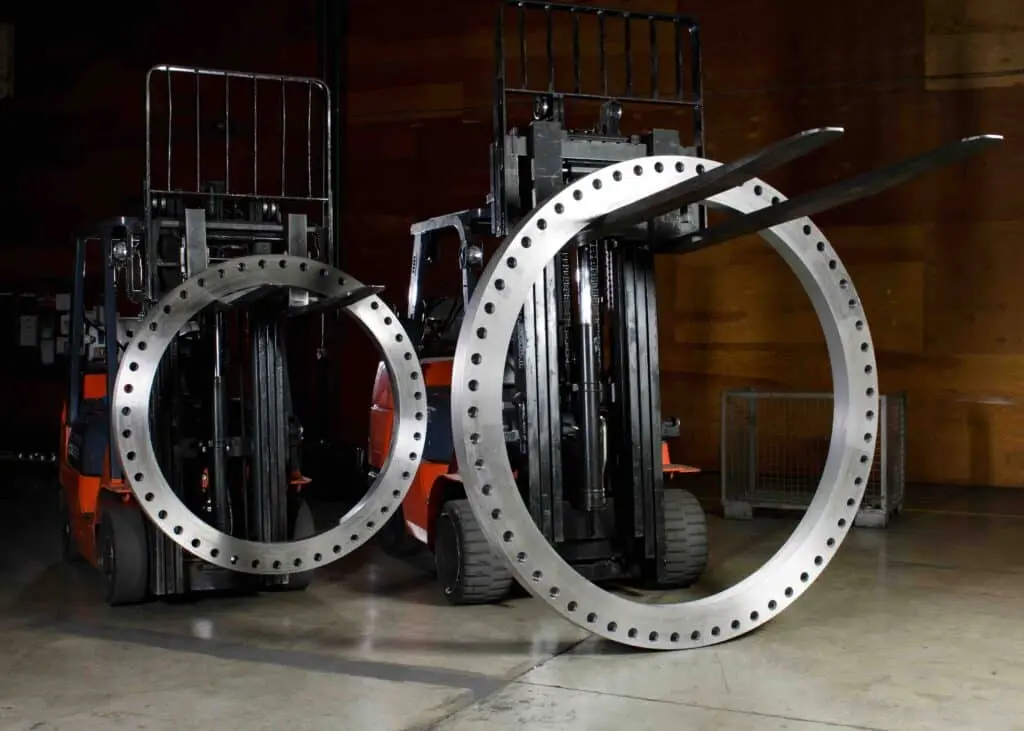
Understanding Pressure Ratings and Material Specifications
Decoding ASME Pressure Class Standards
The maximum working pressure that flanges can withstand at a given temperature is determined by pressure class ratings established by the American Society of Mechanical Engineers. Standard ratings for pressure class flanges include 150, 300, 600, 900, 1500, and 2500. Each designation corresponds to a certain pressure-temperature relationship. For petrochemical applications, where process conditions fluctuate greatly between units, it is essential to comprehend these classes. Material characteristics, the impact of temperature on strength, and safety considerations necessary for hazardous service circumstances are all taken into account by the pressure rating system. Procurement teams must consider the maximum operating pressure, temperature variations during process cycles, and possible pressure spikes during startup or emergency shutdown situations when choosing pressure class flanges. The maximum permitted working pressure for any given pressure class falls as operating temperature rises because the relationship between temperature and pressure rating is inverse. In order to account for temporary circumstances and potential process changes, buyers should ask manufacturers for comprehensive pressure-temperature rating tables and confirm that the pressure class flanges they have chosen offer sufficient safety margins above and beyond typical operating conditions.
Material Selection for Corrosive Environments
Petrochemical processes expose pressure class flanges to aggressive chemical compounds that can accelerate corrosion and material degradation if inappropriate materials are specified. Carbon steel remains economical for general service applications, but petrochemical environments often require upgraded metallurgy to ensure component longevity. Stainless steel alloys including 304, 316, and duplex grades offer superior corrosion resistance for applications involving acidic or chloride-containing process streams. Alloy steels containing chromium, molybdenum, and nickel provide enhanced mechanical properties and resistance to sulfidation in refinery service. The selection process must consider not only the chemical composition of process fluids but also operating temperature ranges. Pressure class flanges manufactured from inappropriate materials may experience accelerated wear, leading to premature failures that compromise system integrity. Buyers should conduct thorough compatibility assessments and consult with metallurgical engineers when specifying materials for challenging service conditions. Documentation of material certifications, including mill test reports, ensures traceability and confirms that supplied pressure class flanges meet specified chemical composition requirements. Investment in appropriate materials during initial procurement significantly reduces lifecycle costs by minimizing replacement frequency.
Dimensional Standards and Facing Types
Standardization of flange dimensions ensures interchangeability between components from different manufacturers. Pressure class flanges manufactured to ASME B16.5 standards maintain consistent bolt circle diameters, flange thicknesses, and facing dimensions across pressure ratings for pipe sizes up to 24 inches. The facing type selected for pressure class flanges directly affects gasket performance and joint integrity under operating conditions. Raised face flanges represent the most common configuration, providing a smooth sealing surface elevated above the flange body that compresses gaskets uniformly during bolt tightening. Ring-type joint facings incorporate a groove machined into the flange face that accommodates metallic ring gaskets for high-pressure, high-temperature applications common in petrochemical service. Buyers must specify facing types compatible with gasket materials and joint assembly procedures planned for the installation. Mismatched facing types between mating flanges create assembly difficulties and compromise seal integrity, potentially leading to fugitive emissions or process leaks.
Installation Best Practices for Petrochemical Applications
Proper Alignment and Assembly Techniques
Successful installation of pressure class flanges requires meticulous attention to alignment procedures that ensure uniform gasket compression and stress distribution across bolted connections. Misalignment between mating flanges creates uneven loading that concentrates stress in localized areas, accelerating gasket deterioration. Installation teams should utilize alignment pins during initial fit-up to maintain concentricity between flange faces before inserting bolts. Proper gasket installation forms another critical element of assembly quality, with gasket material selection based on process fluid compatibility, temperature rating, and pressure requirements. Spiral wound gaskets with graphite filler provide reliable sealing performance for most petrochemical applications involving pressure class flanges. Foreign material, scale, or debris on sealing surfaces compromises gasket performance and must be removed through careful cleaning. Surface finish requirements for pressure class flanges typically specify maximum roughness values to promote effective gasket sealing without creating leak paths.
Bolting Requirements and Torque Specifications
Bolt selection and tightening methodology significantly influence the sealing performance and structural integrity of pressure class flanges in petrochemical service. Bolting materials must provide sufficient strength to maintain joint integrity under operating loads while resisting corrosion. ASTM A193 Grade B7 studs with A194 Grade 2H heavy hex nuts represent standard choices for carbon steel pressure class flanges. Controlled bolt tightening using calibrated torque wrenches ensures uniform preload distribution around the pressure class flanges circumference. Sequential tightening patterns, typically following a star or cross pattern, prevent gasket distortion and maintain parallel flange faces throughout the assembly process. Lubrication of bolt threads and nut bearing surfaces with appropriate anti-seize compounds reduces friction and improves correlation between applied torque and achieved preload.
Quality Control and Inspection Protocols
Comprehensive inspection procedures during and after installation verify that pressure class flanges meet assembly quality standards. Visual examination should identify surface defects, dimensional deviations, or material discrepancies before components enter service. Non-destructive examination techniques including liquid penetrant testing detect surface-breaking defects in pressure class flanges that could propagate under cyclic loading. Post-installation leak testing validates joint integrity and confirms proper assembly of pressure class flanges before introducing process fluids. Documentation of inspection results creates permanent records supporting quality assurance programs and regulatory compliance requirements.
Maintenance Strategies and Lifecycle Management
Routine Inspection and Monitoring Programs
Effective maintenance of pressure class flanges in petrochemical applications requires systematic inspection programs that identify developing problems before they escalate. Visual inspection during routine plant rounds detects obvious signs of degradation including corrosion, leakage staining, or mechanical damage. Ultrasonic thickness measurements track material loss rates in corrosive service environments, enabling predictive maintenance scheduling before pressure class flanges reach minimum acceptable wall thickness. Leak detection and repair programs utilizing optical gas imaging identify fugitive emissions from flange connections, supporting environmental compliance objectives. Inspection frequency should reflect service severity, with critical process connections receiving more frequent attention. Pressure class flanges in services with known corrosion concerns or high cycling rates warrant enhanced monitoring to prevent unplanned outages.
Gasket Replacement and Retorquing Procedures
Gasket replacement represents the most common maintenance activity for pressure class flanges throughout their service life. Planned gasket changes during turnarounds provide opportunities to inspect flange condition and restore sealing performance. Proper disassembly procedures minimize the risk of damage to pressure class flanges during maintenance activities. Old gasket material must be completely removed without gouging flange faces. Flange face inspection identifies corrosion or mechanical damage requiring repair before installing new gaskets. Bolt threads should be inspected for damage or elongation indicating permanent deformation. Retorquing of pressure class flanges after initial startup addresses gasket relaxation and thermal effects that reduce bolt preload during the first operating cycle.
Documentation and Performance Tracking
Comprehensive documentation systems support effective lifecycle management of pressure class flanges by capturing critical information spanning procurement through retirement. Material traceability records linking individual flanges to mill certificates and quality inspection results ensure compliance with code requirements. Maintenance history tracking repair activities and inspection findings reveals performance trends guiding future decision making. Performance metrics including mean time between failures enable comparison between different manufacturers or materials, helping procurement teams optimize specifications for future pressure class flanges purchases based on actual field performance.
Conclusion
Successfully procuring and managing pressure class flanges factory for petrochemical projects requires comprehensive understanding of technical specifications, installation practices, and maintenance requirements. Proper installation techniques and rigorous maintenance programs maximize reliability and safety throughout operational life.
HEBEI RAYOUNG PIPELINE: Your Trusted Pressure Class Flanges Manufacturer
When your petrochemical project demands reliable pressure class flanges that meet international standards, HEBEI RAYOUNG PIPELINE TECHNOLOGY CO., LTD. delivers uncompromising quality backed by ISO 9001:2015 certification. We provide diverse industrial pipe fittings, including buttweld carbon steel pipe elbows, tees, reducers, and flanges, which ensure secure connection points across pressure classes and service conditions. Our product lineup includes solutions for all design requirements, supported by GOST-R and SGS certifications validating export compliance. As leading pipes and fittings manufacturers serving global markets, we understand that petrochemical operations cannot afford component failures. Our pressure class flanges undergo rigorous material verification, dimensional inspection, and performance testing before shipment. From standard carbon steel configurations to specialized alloy materials for corrosive service, our engineering team provides technical support helping you select optimal solutions. Contact us today at info@hb-steel.com to discuss your pressure class flanges requirements and discover how RAYOUNG quality supports your project success.
References
1. American Society of Mechanical Engineers. ASME B16.5: Pipe Flanges and Flanged Fittings NPS 1/2 Through NPS 24 Metric/Inch Standard. New York: ASME International, 2020.
2. Bickford, John H. Introduction to the Design and Behavior of Bolted Joints: Non-Gasketed Joints. 5th ed. Boca Raton: CRC Press, 2020.
3. Chattopadhyay, Somnath. Pressure Vessels: Design and Practice. Cambridge: Cambridge University Press, 2019.
4. Norsok Standard. Piping and Equipment Insulation: Material Selection for Petrochemical and Offshore Applications. Oslo: Standards Norway, 2021.
5. Singh, Karan. Piping Materials Guide: Selection and Specification for Industrial Applications. Houston: Gulf Professional Publishing, 2018.
6. Spedding, Alan J. Flanged Joints: Gasket Selection and Assembly Procedures for Industrial Process Plants. London: Professional Engineering Publishing, 2019.

Need a quote? Want to see samples? Just say hello. We’re friendly. We’re fast. And we’re ready when you are.
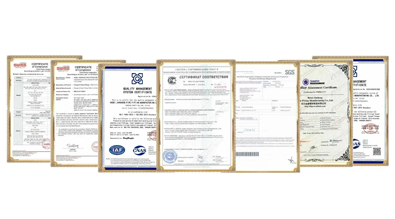
Welcome to RAYOUNG – Strong Pipes, Stronger Promise
